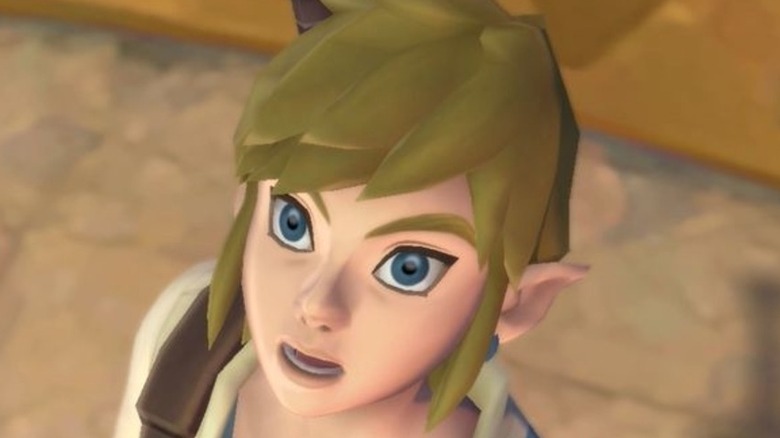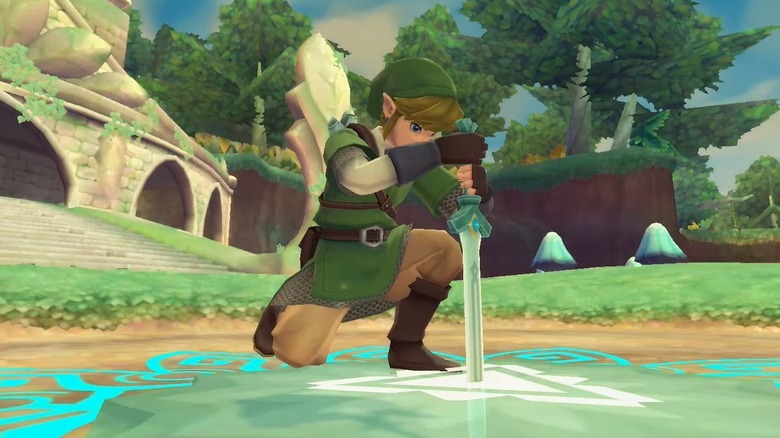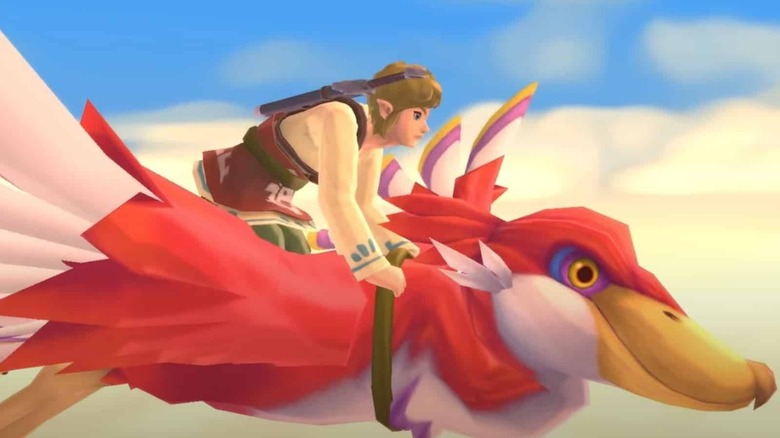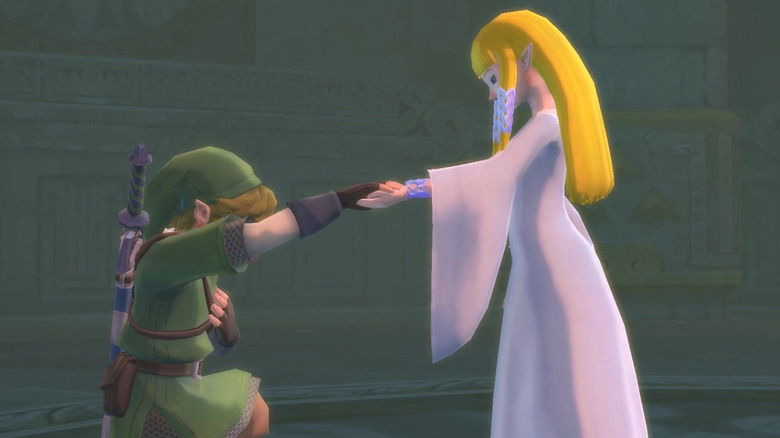The Big Differences Between The Original And New Legend Of Zelda: Skyward Sword
On July 16, 2021, "The Legend of Zelda: Skyward Sword HD" arrived on the Nintendo Switch at last. "Skyward Sword" has always been a bit of a divisive entry in the "Zelda" franchise, especially because of its implications for the rest of the "Zelda" timeline. Now, a new generation of gamers will be able to experience Link's first adventure, before the creation of Hyrule, on the Nintendo Switch.
As noted by Eurogamer, the most obvious improvement to the original "Skyward Sword" is its graphics. "Skyward Sword" utilized top notch Wii graphic capabilities when it was released in 2011, but gamers in 2021 have different expectations for what games should look like. "Skyward Sword HD" gives the original title a facelift, complete with higher frame-rates and cleaner textures, all without compromising the original game's distinctive art style.
The changes made to "Skyward Sword HD" don't end at the graphics, though, and the game actually isn't a direct port. Subtle tweaks make "Skyward Sword HD" distinct from its Wii counterpart, giving old and new gamers alike something to look forward to.
Fi takes a breather
In the original "Skyward Sword," players felt annoyed with Fi's constant interruptions. While the spirit was only trying to help Link navigate the world, her comments quickly began to feel intrusive.
In response to this, Nintendo tweeted that it would change Fi's hint style, calling some information "optional hints." Nintendo said players can "look for a symbol in the lower left corner and a pulsating glow from your sword. Some instances from the original game's release where Fi provided mandatory help are now optional."
While fans complained about Fi's constant comments in the original release of "Skyward Sword," many also didn't seem too happy with Nintendo's fix. Many players said that making Fi's comments optional was only a small quality of life improvement, arguing that this showed that Nintendo did "the bare minimum" when porting the game. Others mentioned that they'd probably listen to Fi even when her advice wasn't vital, just because they actually like character.
Fi's no longer constantly interrupting the game, but that doesn't mean that she doesn't have anything to say. One player said the game was still full of "little annoyances," despite Nintendo's efforts Thankfully, Fi's no longer one of them.
Motion controls aren't the only way
When "Skyward Sword" originally released, the Nintendo Wii was at the forefront of the motion control movement, and "Skyward Sword" utilized Motion Control Plus. While these motion controls made for an interesting addition to the franchise, they frequently frustrated players, who just wanted to guide Link through the world in peace.
Nintendo solved the motion control problem by creating optional button controls for "Skyward Sword HD." Now, players have the option whether they want to swing their arms in the air or simply move a control stick to guide Link's sword.
The change makes using the game's new camera system a bit wonky, but it's definitely a step up from motion controls that won't register on a sensor bar. Of course, players who adore motion controls can still use the Nintendo Switch's Joy-Cons to wave away at enemies, but providing another option makes the game enjoyable and accessible for a much wider audience.
Nintendo saves the day
"Zelda" games traditionally have three save files, so three separate players can enjoy the game. Some games in the series have deviated from that mold, however. For example, "Breath of the Wild" only allows one game to be in progress at any given time. Gamers found some workarounds to "Breath of the Wild" and its save file system, but it still left others wanting more. "Skyward Sword HD" allows gamers to have the traditional three save slots, but it changes the way in which those slots can be used.
As Eurogamer reported, players can use the save slots in any way they wish, choosing which save slot to use each time they stop at a bird statue. In other words, separate slots can cover the same in-progress game with multiple save points.
"Skyward Sword HD" also has a handy auto-save feature that can quite literally save the day. Some players might forget to visit a save statue after completing a difficult dungeon or discovering a new location, but auto-save in "Skyward Sword HD" fixes that problem by periodically saving the most recent information. Auto-save might not be a consistent feature in all the "Legend of Zelda" games, but it's a relief for players to know they won't have to replay a particularly difficult battle again if they forget to manually save their game.




